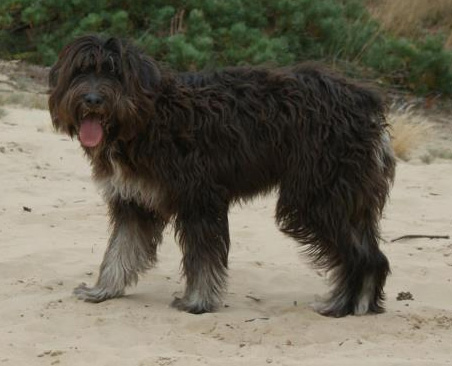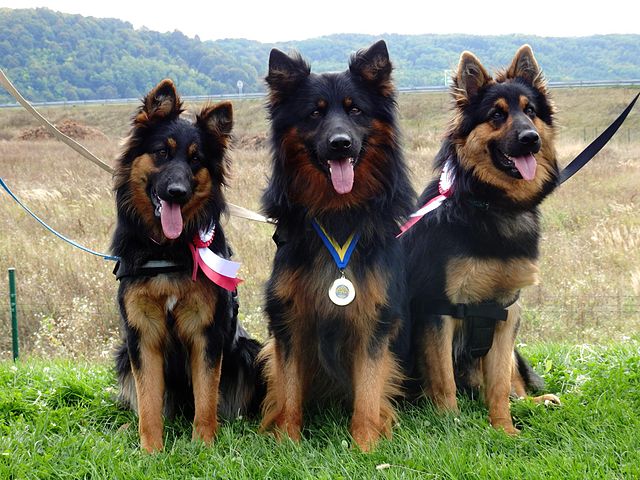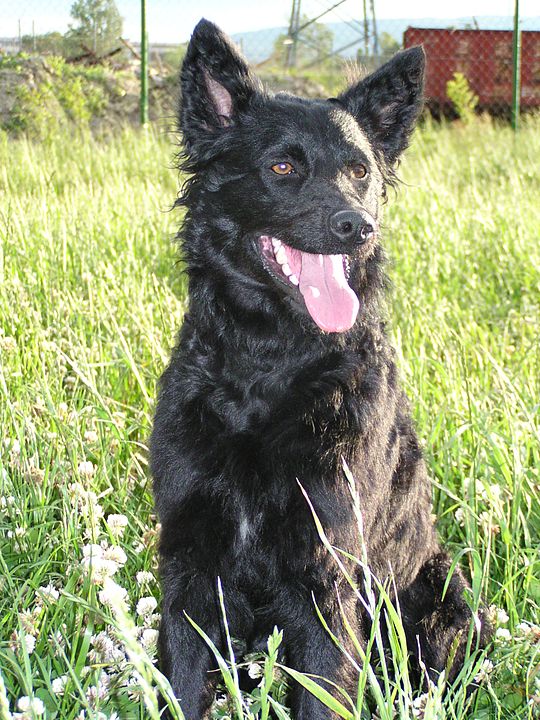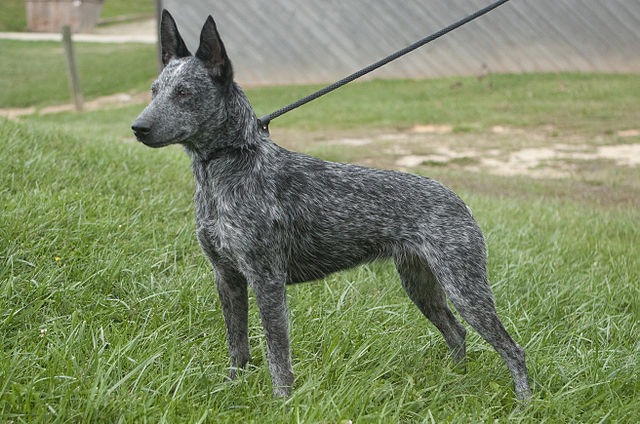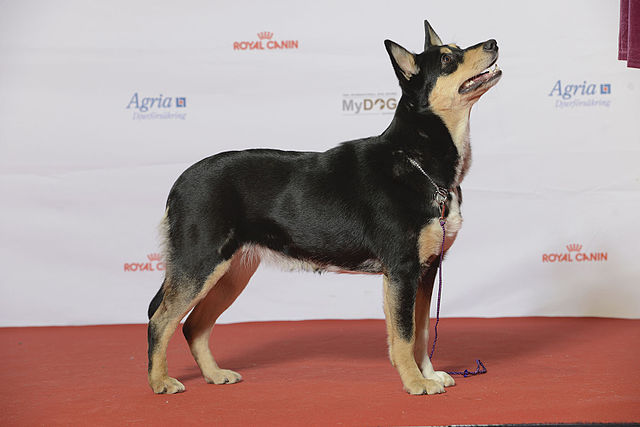The Catalonian Sheepdog was developed in the Catalonian Pyrenees Mountains in Spain. He was created to herd and drive stock from place to place, as well as to serve as a guard dog. During the Spanish Civil War he was used as a messenger and sentry. More recently he has also been used as a police dog and in search and rescue! High spirited, hard working and versatile, he was even chosen to be the mascot of the 1992 Barcelona Olympic games! Not well known, this is a rare breed that was once on the verge of extinction but has been rising steadily in numbers since the 1970’s. While he is recognized by the UKC in the United States, he is often only seen overseas, primarily in Spain.
Catalonians are intelligent and tend to do well in dog sport competitions, from obedience competitions to agility! Many also compete in treibball (herding a giant ball), canine freestyle (doggie dancing), flyball, rally, conformation, tracking and herding. This is a breed that needs to have regular mental stimulation so training them in obedience and/or other dog sports should be considered essential – even if the owner doesn’t actually plan to compete. Those who have livestock to herd, or are able to bring their dog to livestock, make especially good owners for this breed!
As a working/herding dog, the happy and cheerful Catalonian Sheepdog is athletic and needs plenty of exercise. While their long coat may make it seem as though they shouldn’t be outside too frequently, in fact they are known as being great in all weather and are fairly resistant to both heat and cold (within reason, of course). Therefore a rainy day is no excuse not to go on a walk! These working dogs need a decent amount of physical activity every single day so owners must be active themselves.
The Catalonian has excellent herding skills and can do this job with very little training. They do have an independent streak which is prized by shepherds, as they will make their own decisions about how best to handle a flock. In terms of attitude during herding – they are known for their courage and dedication to the job, as well as their compassion towards the animals they have been charged to work with. Take note that the Catalonian will likely try to herd people and other animals – it’s in his blood!
Catalonian Sheepdogs are dedicated and loyal to their owners and get along well with other dogs and pets. They are also gentle with children despite their enthusiastic demeanors. Although extremely friendly towards those whom they know, they are much more aloof and suspicious of strangers until they get to know them. While they shouldn’t be outright aggressive, the correct temperament for them is to be naturally wary and protective until they are certain that the stranger poses no threat. Some can be overly nervous – this is usually a result of subpar socialization. It is vital that they be extensively socialized from early puppyhood so that this does not happen.
While the majority of Catalonians are very healthy, prospective owners should only buy from breeders who health test hips and eyes, as both can occasionally be problematic in the breed. This said, most members of the breed live healthily for 13-14 years as long as vet care and exercise needs are met. This breed will thrive if giving a living situation that includes a large fenced yard for them to romp in regularly, rather than being cooped up in a small home.
The Catalonian Sheepdog is a medium sized dog with an athletic build that may look stockier than it is because of the long hair. The double coat can be either flat or slightly wavy, and often sheds in a very unusual way with dogs losing hair on the front end before moving onto the hind end! Colors include various shades of fawn, grey, sable or a black/tan coloration. The long coat extends even to the face, with a beard and other facial furnishings being expected. As should be predicted, they do require a higher-than-average grooming commitment and need to be brushed frequently.
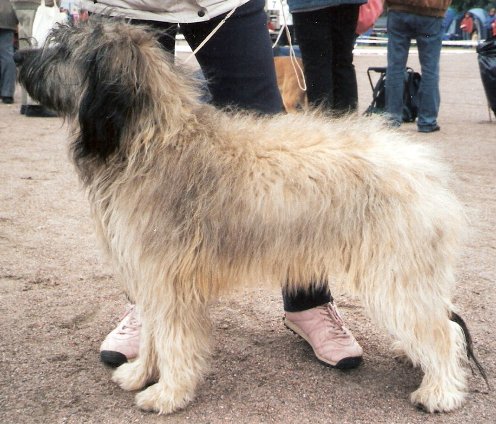
Photo by Canarian

